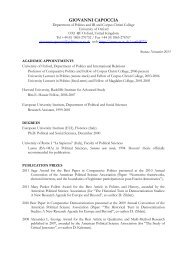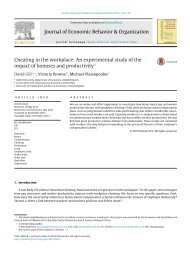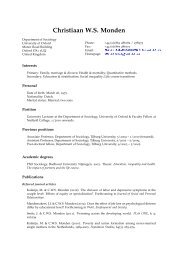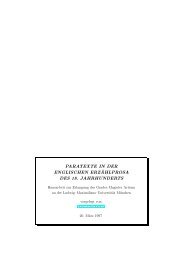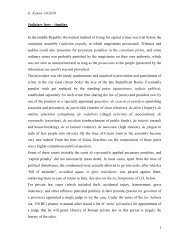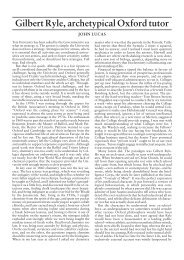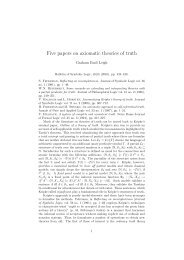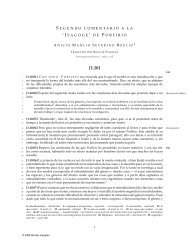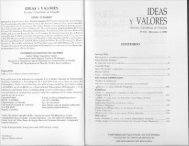Lexical Functional Grammar - Personal Pages Index
Lexical Functional Grammar - Personal Pages Index
Lexical Functional Grammar - Personal Pages Index
Create successful ePaper yourself
Turn your PDF publications into a flip-book with our unique Google optimized e-Paper software.
a theory of constructive case, according to which a casemarked phrase places<br />
constraints on its f-structure environment that determine its grammatical function<br />
in the sentence. This treatment supplants the traditional treatment of<br />
obliques in terms of the PCASE feature.<br />
3.2 <strong>Functional</strong> descriptions<br />
As with c-structures, we draw a sharpdistinction between f-structures and their<br />
descriptions. The set of f-structure constraints associated with the analysis of<br />
some sentence is called a functional description or f-description.<br />
To refer to the value of a feature in some f-structure, we use an expression<br />
like the following:<br />
(18) Reference to the value of the TENSE feature in f:<br />
(f TENSE)<br />
This expression refers to the value of the TENSE feature in the f-structure f. If<br />
we want to specify the value of that feature, we use an expression like:<br />
(19) (f TENSE) = PAST<br />
This defining equation specifies that the feature TENSE in the f-structure f<br />
has the value PAST.<br />
We can also specify that a feature has a particular f-structure as its value.<br />
The expression in (20) specifies that the value of the SUBJ feature in f is the<br />
f-structure g:<br />
(20) (f SUBJ) = g<br />
Somefeaturestakeastheirvalueasetoffunctionalstructures. Forexample,<br />
since any number of adjuncts can appear in a sentence, the value of the feature<br />
ADJ is a set. We can specify that an f-structure h is a member of the ADJ set<br />
with the following constraint, using the set-membership symbol ∈:<br />
(21) h ∈ (f ADJ)<br />
The constraints discussed so far are called defining constraints, since they<br />
define the required properties of a functional structure. An abbreviated f-<br />
description for a sentence like David sneezed is:<br />
(22) (f PRED) = ‘SNEEZE〈SUBJ〉’<br />
(f TENSE) = PAST<br />
(f SUBJ) = g<br />
(g PRED) = ‘DAVID’<br />
This f-description holds of the following f-structure, where the f-structures are<br />
annotated with the names used in the f-description (22):<br />
10



